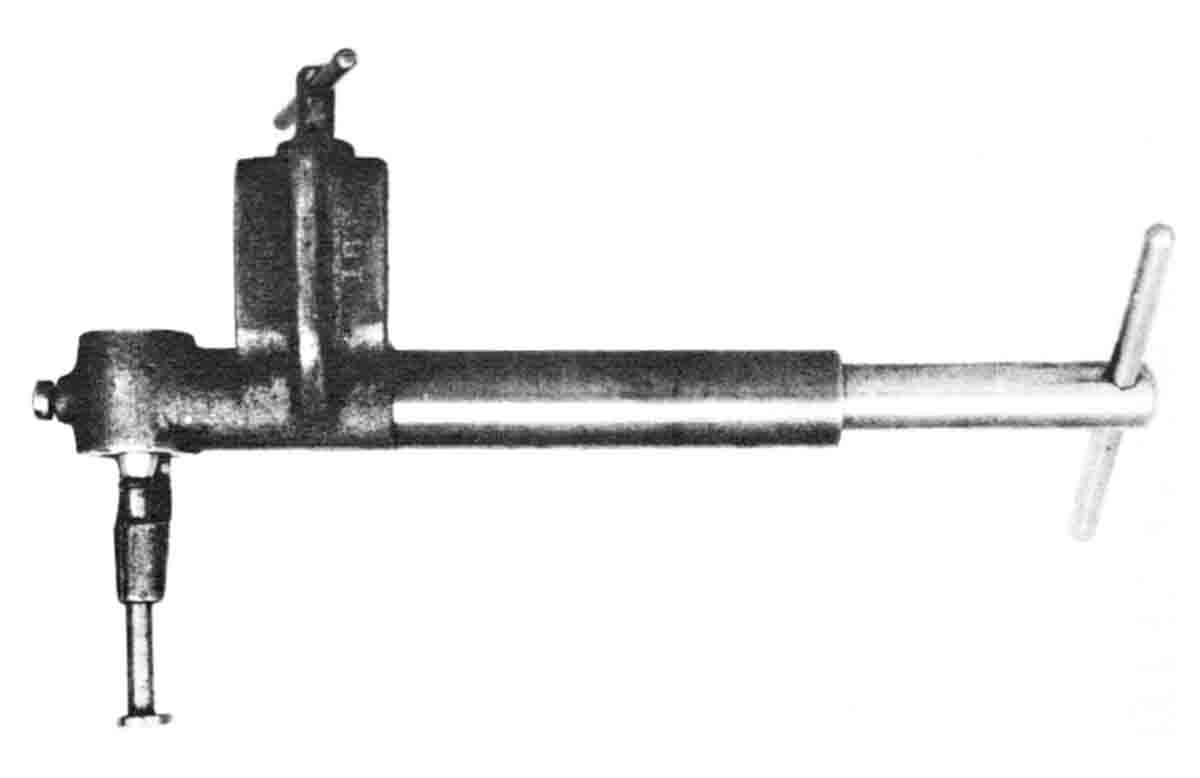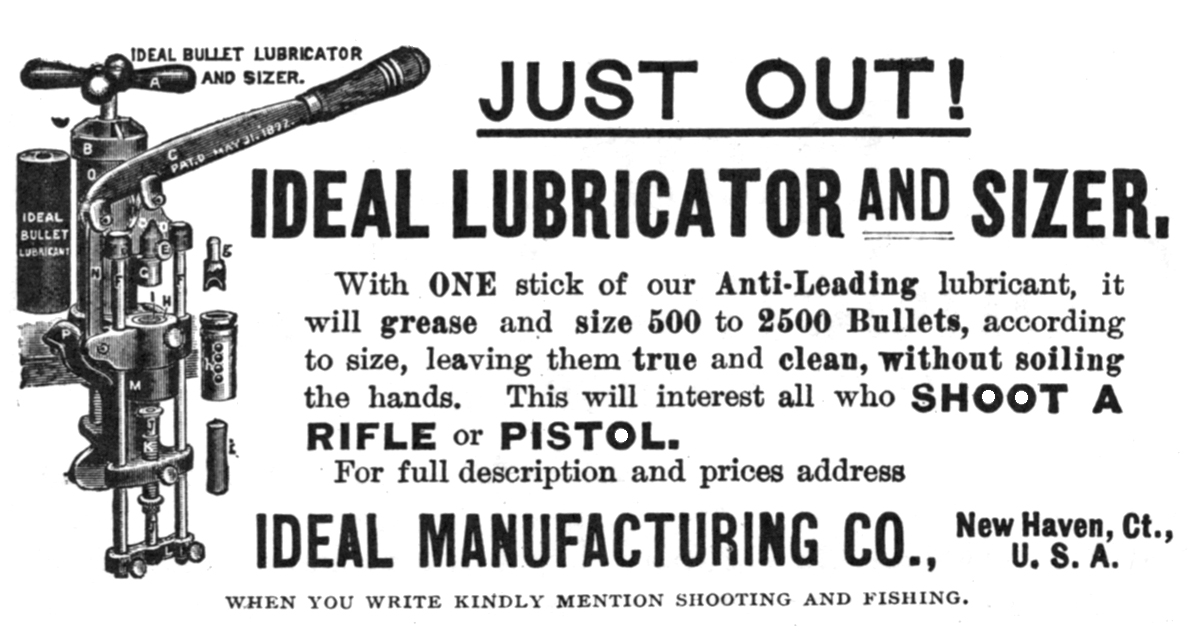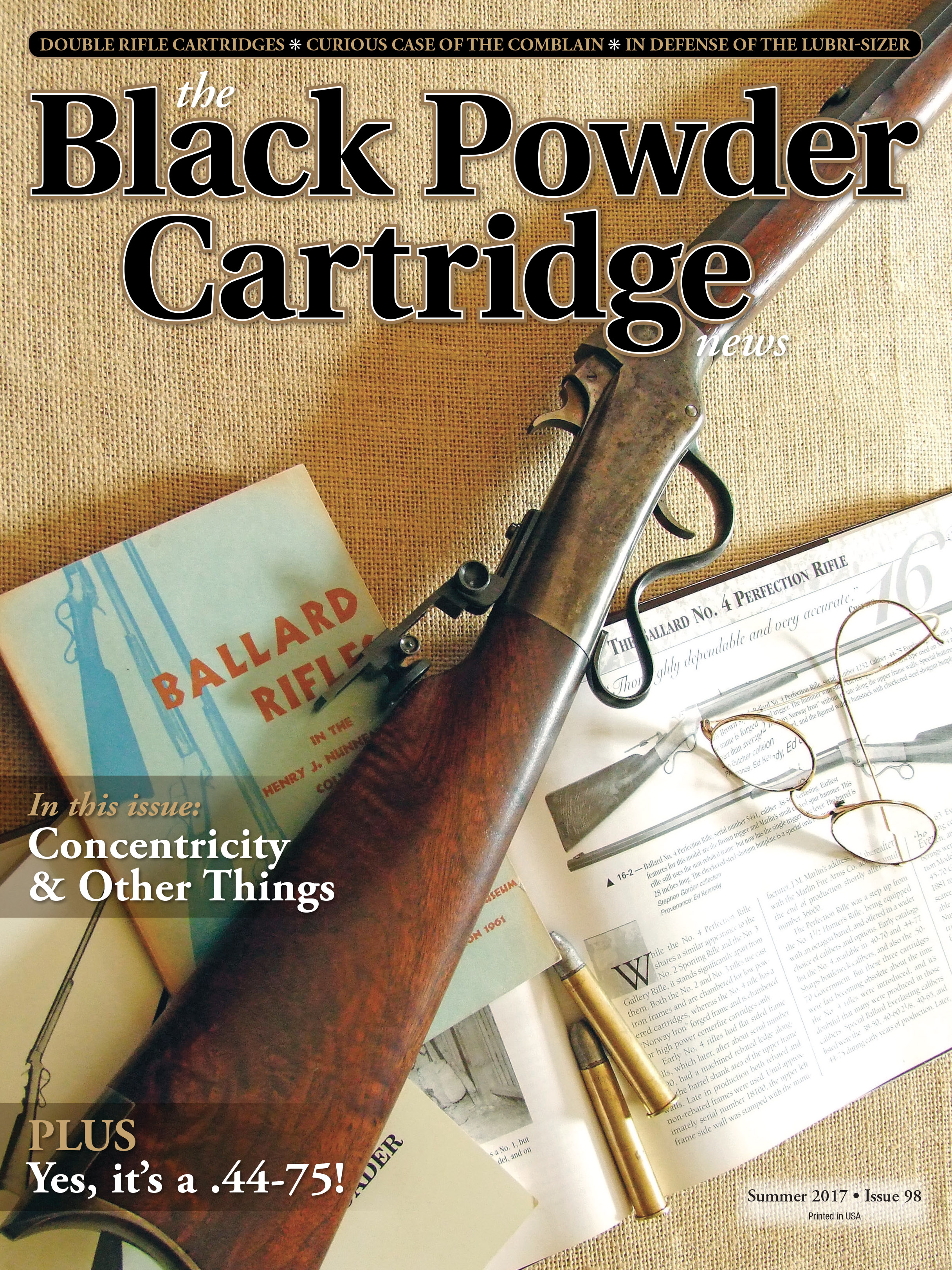In Defense of the Lubri-Sizer
feature By: Steve Garbe | June, 17
In cast bullet shooting, as in many other endeavors, techniques come and go. In recent conversations with fellow riflemen, the subject of lubing bullets and how best to do it has often been the topic. I was somewhat surprised to hear that many shooters have dismissed the familiar “lubri-sizer” as being not really the correct tool or method for lubing grease-groove bullets. Pan lubing seems to be the old/new proper technique, and anyone using a lubri-sizer is just not “up to speed.”
For those beginning shooters who may not be familiar with the tool I’m speaking of, a “lubri-sizer” is a reloading accoutrement that sizes a cast bullet to a specific, concentric diameter and applies lubricant into the lube grooves under pressure. I’ve used one since I started reloading cast bullets; Lyman, Redding and RCBS all make excellent lubri-sizers.

Please make no mistake; I pan lube many bullets myself, especially when using tapered designs. But I also use a lubri-sizer extensively and have found that, when used correctly, it does an excellent job of lubricating bullets with no detrimental effect to accuracy whatsoever. One of the oft-repeated claims against sizing and lubing bullets is that they will be “distorted” by the sizing process. If one uses a correctly fit nose punch – one that centers the nose and doesn’t cut into it – distortion can be held to an absolute minimum. Also, instead of using the setscrew in the ram to hold the nose punch in place, put a small dab of bullet lube on the shank of the nose punch. This will hold the nose punch in the ram and also allow the nose punch to “float,” allowing it to center the bullet in the die rather than start it crookedly.
When sizing a bullet in the lubri-sizer, start it gently into the die, allowing the chamfer on the die to guide the bullet in. This is just common-sense machine shop practice when seating an over-size piece of work in to a die for swaging. Partially starting a bullet base into the die, bringing the ram back up and giving the bullet a half-turn before running the bullet all the way into the die will also aid concentricity, especially when sizing and lubing hard, over-size bullets.
Probably more distortion to bullets occurs when one is attempting to size bullets down excessively. By excessively I mean .003 inch or more. I usually do not size bullets more than a thousandth, because what I’m really trying to do is take out bullet runout and have a concentric bullet to load in the cartridge case. If you have a bullet that is .002 inch or more out of round (as many are) and seat that bullet in a cartridge, you have already have a loaded round that is .002 out. Combine that with variation in case walls, and it’s easy to see how a loaded round’s concentricity is destroyed. I would rather size a bullet to gain concentricity than pan-lube and leave that variation in the mix.

Most knowledgeable riflemen will agree that swaged bullets are more consistent in their weights because the swaging process forces out voids that can seriously affect accuracy. But what about “swaging” lubricant into lube grooves with the lubri-sizer? When the lube is applied under pressure, as with a lubri-sizer, voids are eliminated. Don’t think that having a void of lubricant in a lube groove can affect accuracy? Try shooting a bullet that has just half of one lube groove with no lube in it. A flyer is almost guaranteed as the bullet will upset into the unsupported lube groove and become unbalanced.
As I’m lubing bullets, I run the bullet down into the die, apply pressure to the lube reservoir and bring the bullet back up. Then I rotate the bullet about a half turn, run it back down and again apply pressure. This makes it much easier for the lubricant to fill all voids and benefits concentricity of the bullet itself. In the case of typical two-diameter bullet, where the nose is bore-size and the body is groove diameter, I run the bullet into the die far enough so that a small amount extrudes onto the bullet nose. Wipe the nose of the bullet lightly with your finger to uniform the lube into a thin film and leave it on the bullet. This does wonders for preventing leading, especially in cold, dry conditions.
Lubricant sticks are very convenient for recharging the reservoir of the lubri-sizer, but I prefer to melt my lubricant in a double boiler and pour it directly into the lubricant reservoir. In this way, much of the air that would be trapped in the reservoir by mashing down a stick is eliminated. Trapped air will combine with the lubricant under pressure and give the lube a “frothy” look. It is also not nearly as dense, so in effect you are putting on less lube, and there is a danger of air gaps in the lube grooves.
After the bullet is lubed, wipe the base clean with a soft rag. Lubricant that sticks to the bullet base can cause the wad in the loaded round to stick to it after it leaves the muzzle. This scenario can really cause fliers.
After you have finished your bullet lubing session, back the pressure off the lube reservoir. Some lubricants will separate their oils out if the pressure is maintained over time, and at the least you will notice lube extruding out of the die. I also cover my lubri-sizer so that dust and dirt cannot find their way into the exposed die. Make sure that the ram is lightly lubricated and free of grit. Lubricant that is left for long periods of time in the lubri-sizer can dry out. If you haven’t used the sizer for over a year it is prudent to recharge it with fresh lube. At the very least, run several reject bullets through the die initially to remove any dried-out lube in the die itself. Lubricant that is in the reservoir takes much longer to dry out, as it is effectively sealed and airtight.
There are some instances when pan lubing is the best technique, I will admit. When one wants to apply a bullet lubricant in its hardest possible temper, pan lubing will do this better than the lubri-sizer. In my experience, lube that is applied from compressed sticks in a lubri-sizer is the softest temper, lube applied with a lubri-sizer filled with melted lube is next in hardness and pan-lubed bullets have the hardest lube. If you regularly shoot in very hot weather, you can pan lube bullets first to fill the grooves with hard lube and then size them to gain concentricity. Put a little pressure on the lube reservoir when sizing and you’ll guarantee that the lube grooves are filled.
Tapered bullets can be lubed and sized in a lubri-sizer, but sometimes it is a messy proposition. However, the base can be sized for concentricity and then the bullet can be pan lubed, getting the smaller diameters of the tapered bullet filled. This is the best way to gain the advantages of a concentric bullet base while not destroying the taper of the bullet design.
As with all tools, the lubri-sizer is a valuable addition to the reloading bench when we understand its advantages and limitations. Used correctly, it is a fast and convenient way to size and lubricate cast bullets and can definitely contribute to the overall accuracy of the specific ammunition.


